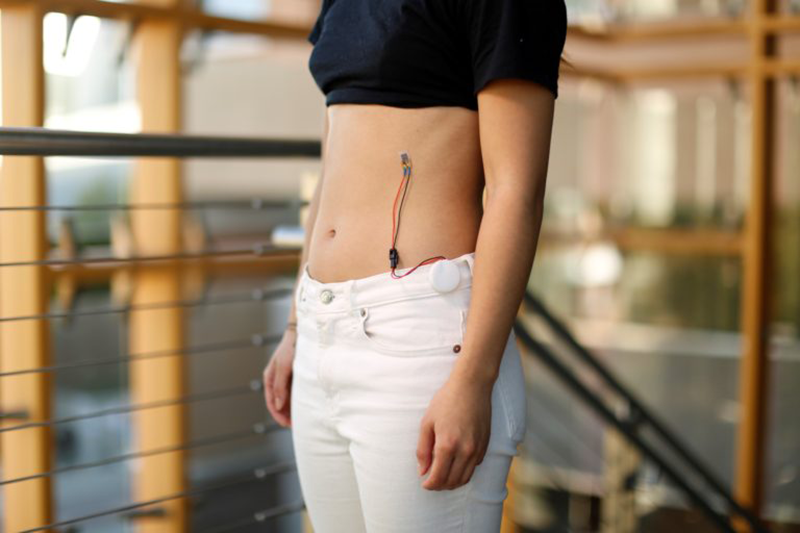Traditional wearable monitors that measure a person’s respiration rate cannot track the volume of air that a person inspires. However, this is a key indicator that can be used to assess the health status for people with asthma and other lung conditions.
Read more CES 2019: Nanit Introduces Breathing Wear, A Wearable that Tracks a Baby’s Breathing
Biomedical engineers at the University of California, Irvine have now developed a wearable, disposable respiration monitor that provides high-fidelity readings on a continuous basis. It’s designed to help children with asthma and cystic fibrosis and others with chronic pulmonary conditions, reports UCI News.
The researchers used these inexpensive sensors using the popular children’s toy Shrinky Dinks. They are thin sheets of plastic that are painted on and then shrunk with heat.
The Band-Aid-like sensors are placed in 2 positions – one between the ninth and 10th ribs and another on the abdomen – to monitor the rate and volume of the wearer’s respiration by measuring the local strain on the application areas. The collected information can then be used to learn about an oncoming asthma attack.

“The current standard of care in respiration monitoring is a pulmonary function test that’s often difficult to perform and limited in terms of the snapshot it provides of a patient’s respiratory health – meaning problems can sometimes be missed,” said Michael Chu, UCI graduate student researcher in biomedical engineering and lead author of the study. “Our new stretch sensors allow users to walk around and go about their lives while vital information on the health of their lungs is being collected.”
To make the devices, the engineers applied a very thin layer of metal to a sheet of the plastic toy and then heat-shrinking it to cause corrugation. Next, the film is transferred to a small bandage-looking soft and stretchy material that can be adhered to a patient. The embedded sensors send the signals via Bluetooth to a smartphone.
Read more Masimo MightySat Rx Pulse Oximeter Gets FDA Clearance to Measure Breathing Rate from Fingertip
The devices were developed in the lab of Michelle Khine, a UCI professor of biomedical engineering. Her lab is famous for using Shrinky Dinks as a platform for medical applications. About a decade ago, she innovated the use of the toy to produce microfluidic devices.
“It’s amazing that this toy for kids has enabled us to create these robust sensors that may one day benefit children and others around the world,” she said.












